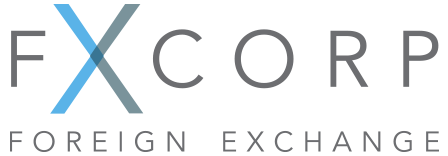Wages Rise But Still Lag Behind Inflation
AUD
The AUD is largely down against most majors in light of sub-par wage data. The ASX closed up +0.3%, reaching its highest level since early June, with consumer staples leading the gains. Asian equities closed largely up, with the Nikkei rallying +1.2%. Iron ore is up +0.1%, while Gold and Natural Gas have each slipped by -0.5%. Australia’s wages rose at their fastest rate in almost eight years but still less than half the headline inflation rate, reported by the ABS. The wage price index rose 0.7% in the June quarter and 2.6% annually, seasonally adjusted. Australian labour force data for July will be released today, a key indicator of economic health as Australia goes through a cycle of interest rate hikes. June’s report was very strong, with the Unemployment rate falling sharply to 3.5% and employment jumping a +88k m/m. The market is tipping a stable unemployment rate, with a monthly change in employment of +26.5k. There will likely be a larger share of workers on reduced hours due to July’s spike in Covid cases.
USD
The AUD/USD has dropped sharply, falling from grace to trade at 0.6933 this morning, having peaked at 0.7024 – even dropping to lows of 0.6912. Wall St was softer overnight with the NASDAQ closing -1.3%, the S&P 500 -0.7% and the Dow Jones -0.5%. US Retail Sales for July were unchanged, down from a negatively revised +0.8% and worse than expectations of +0.1%. Core measures however were much better than expected with ex-autos at +0.4% compared to expectations of -0.1% and ex-autos and gas at +0.7% against expectations of +0.4%. The FOMC minutes from the late-July meeting revealed the 75bps hike was unanimous, while further rate hikes are necessary to bring inflation under control. Even so, members noted that a slower rate of rate hikes was needed at some point and there was a risk they would tighten more than necessary. The Greenback was still in demand despite the somewhat meek future guidance, with DXY (USD Index) peaking at 106.89. Tonight, all eyes will be on the Philly Fed Manufacturing Index, with markets expecting worsening conditions at -4.9. Weekly Unemployment Claims are expected to sit steadily around 265k while the gradual decline in Existing Home Sales is expected to continue with an annualized monthly expectation of 4.87m.
EUR
The AUD/EUR opens at 0.6812, having steadily dove from .6904 to .6799. European equities opened higher with the Eurostoxx 50 and the DAX up around +0.2%. The quiet week of data from Europe continues with some second-tier data being released. In the Eurozone, Q2 Flash GDP increased 0.6%, stopping shy of expectations at 0.7%. Subsequently, the 3-month Euribor climbed 1.8bps to 10-year highs of 0.351%. Eurozone Flash Employment Change for 2Q printed at 2.4% y/y, down from a previous 2.9%. Today, Final CPI y/y and Core CPI y/y are expected at 8.9% and 4% respectively, up from last month’s 8.6% and 3.7%. This will likely add to the ECB’s pressure to deliver another 50bp hike at September’s meeting.
GBP
The AUD/GBP opens at 0.5754, having tanked from recent highs above 0.58, with all signs pointing to more rate hikes from the UK. UK headline CPI data came in at a 40-year high of 10.1%, surpassing already bleak expectations of 9.8%. The data showed a breadth of price increases, with the core read excluding energy, food, alcohol and tobacco also higher than expected at 6.2% y/y vs 5.9%. Market pricing for the BoE now sees Bank Rate above 3.7% by March next year and peaking at 3.74 in May, 28bp higher than yesterday. Thereafter, 2-year Gilts (UK Government Bonds) sold off as much as 30bp to 2.45%, and caused 2y10y to invert to -21bp… Levels unseen since 2008. No key data out today as we await tomorrow’s Retail Sales m/m figures (currently tipped at 0.2%)
NZD
The AUD/NZD opens at 1.1044, having steadily declined off the back of yesterday’s Official Cash Rate announcement. As expected, the RBNZ increased the Official Cash Rate by 50bps to 3% in an attempt to rein in inflation. Governor Orr ‘honestly’ believes inflation is ‘on its way down’… Potentially a positive sign to markets as NZ appears to be at the global forefront of monetary policy decisions. The RBNZ also slightly lifted its forecast OCR track to project a peak in the cash rate of 4.1% next year (previously 3.95%), and signaling a high chance of 50bps hikes at each of the next two meetings in October and November. The tone of the statement was hawkish, as expected, and emphasised that core inflation was still much too high and the labour market too tight. No key data today, while tomorrow sees NZ’s Trade Balance, tipped at close-to 1y lows of 105M, and Credit Card Spending y/y, but shouldn’t impact markets like yesterdays rate decision.
